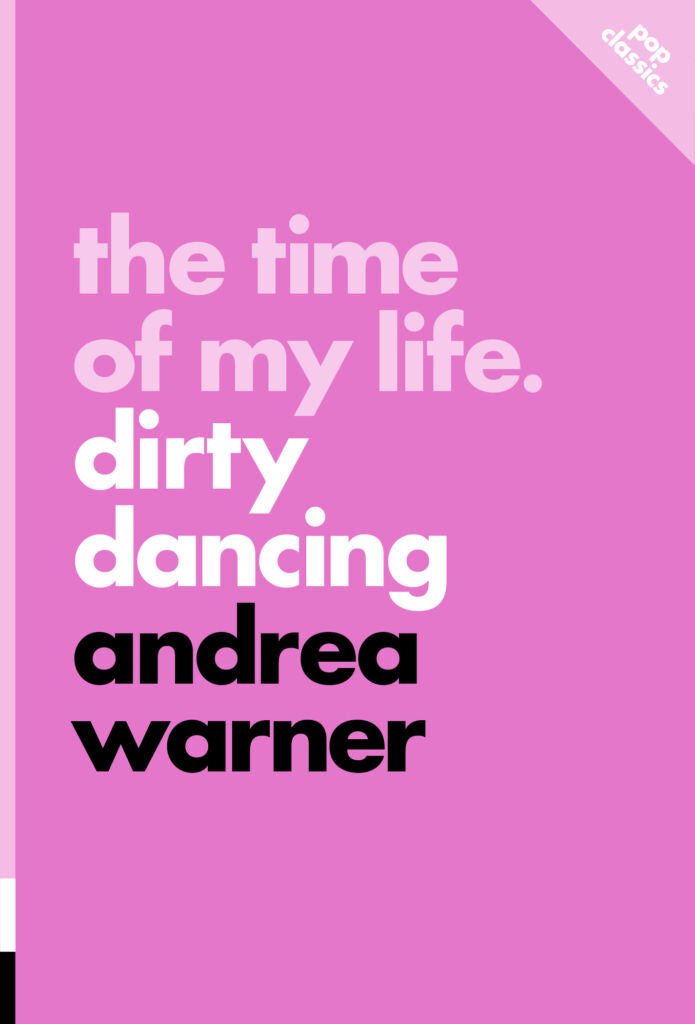Val's Book Reviews

The Time of My Life: Dirty Dancing
by Andrea Warner
Toronto: ECW Press, April 2024
$19.95 / 9781770417410
This small book by author Andrea Warner covers many important topics that are still relevant in today’s world.
The author has told her own story, comparing it alongside the story in the movie Dirty Dancing, which was released in the summer of 1987 when she was only nine years old. The topics covered in this book cover many issues: portraying girls as full individuals and the theory that anything is possible, sexual awakenings, political activism, and advocating for safe abortions.

“I didn’t see it (the movie) in a theater, of course,” she writes. “Movies were expensive and it was a rare treat to actually go watch something on the big screen. The movie was rated PG-13, and my parents were cool but not that cool.” Her family always waited for a VHS release of movies and even then, she and her younger sister mostly viewed those videos at their grandparents’ house where “they ended up sitting on the carpet in front of the television Sunday after Sunday watching movies like Mannequin and Ferris Bueller’s Day Off – and, eventually Dirty Dancing.”
The sexual innuendos in Dirty Dancing were beyond embarrassing for the two young sisters, having to watch it in the living room with other family members present. Warner describes her embarrassment in an excellent way with the words: “it felt like I’d swallowed some kind of twin nightmare, a lava monster full of hormones accompanied by an ice-cold anxiety ghost.”
Dirty Dancing wasn’t the first time Warner had been stirred by visual sexy content though. She had already watched daytime soap operas and she and her childhood friend had often placed their Barbie dolls in pseudo-sexual situations. Nonetheless, Dirty Dancing had most definitely awoken all those feelings when it came along by the time she was thirteen. “We were primed, and ready and waiting for something like Dirty Dancing to come along,” she writes.

Warner also particularly enjoyed watching dance movies from an early age, as she loved to dance herself, but she had been primed since childhood to believe that “her fat-since-birth body was bad.”
Dirty Dancing is a story set in 1963 “about a teenaged girl called Baby who goes on a summer vacation with her family. She’s meant to start college in the fall and dreams of joining the Peace Corps, and she can’t imagine meeting a young man who’s better than the father she idolizes.” However, over the course of a few weeks that summer, her whole life is changed once she meets dance instructor, Johnny. Their meeting and her sexual awakening cause her to lie to her father and help pay for her new friend, Penny’s, abortion.
Initially, I liked the idea of a memoir written alongside a story within a movie, but Warner’s book soon becomes more like a movie review and less about her own life. The reader tends to get bogged down in her in-depth analysis of the movie especially when she starts to describe the life and input in the movie of screenwriter/producer, Eleanor Bergstein.
So, before writing this review of Warner’s book, I decided to re-watch the movie Dirty Dancing on Netflix. I wanted to remind myself of the story, the characters and the sexual dance movements that were far too racy and ahead of the times for audiences in 1987. Although this movie has become a classic with its memorable line “No one puts Baby in a corner” and the breath-taking lift that Baby finally achieves with Johnny at the end of the movie, I found the acting and delivery of the lines very stilted when compared to modern-day movies. Nonetheless, I could see how an impressionable teenager at that time would have been affected by the chemistry between Baby and Johnny. Their affair was far more than a mere summer fling and the additional subplots in the story of abortion, women’s rights, and political activism, together with a soundtrack of music that has become legendary through the years, would have left strong feelings in the heart of the author who immersed the story of Dirty Dancing inside the time of her own life, thereby allowing the movie and Eleanor Bergstein to change her complete life.
Warner states towards the end of the book “I can chart how Dirty Dancing helped me set up for a life where I refused to settle for anything less than being an author of my own story; a complete person. . . Dirty Dancing changed my life.”
A memorable paragraph in Warner’s book comes on Page 10 where she writes: “Baby’s journey was a kind of permission to seek pleasure, gratification, and joy in my body; to stand up for other people and what I think is right; to revel in the moment; to go after what I want, and not be afraid of the next iteration of myself, even if it defies others’ expectations. And finally, not to be afraid to have fun.” That is surely a good lesson for us all, and Warner’s book allows her readers to see that. If you are a fan of Dirty Dancing and its significantly timeless story, this book is for you.
Andrea Warner has written books in the past which speak for activism and the power of music through such works as Rise Up and Sing! and The Authorized Biography of Buffy Sainte-Marie. She lives in Vancouver, British Columbia.

Link to Original Review
“The Ormsby Review, named for pioneering historian and UBC professor Margaret Ormsby, is a remarkable and comprehensive online review of more British Columbia books than you ever imagined existing — the west coast publishing market is lively. It covers fiction, poetry, politics, memoir and much else, as well as a lot of local and west coast history.” – Christopher Moore, September 14, 2020.
Editor and Publisher: Richard Mackie
Mission Statement: The British Columbia Review, formerly The Ormsby Review, is a lively and inclusive Vancouver-based online journal devoted to the literature, arts, culture, and society of British Columbia. Our mandate is to review books by BC-based writers wherever they choose to publish them. We review books from the member publishers of the ABPBC (Association of Book Publishers of BC), but we also review books that are privately printed, self-published, or published by BC writers at publishing houses elsewhere in Canada or abroad. When possible, we also find BC reviewers. Our accessible and authoritative reviews and essays, written by experts in their fields, are packaged as illustrated magazine articles.
The British Columbia Review works with writers, publishers, and literary professionals across Canada to promote books published by BC writers or about British Columbia in all its diversity. We include books by all authors, regardless of race, age, ability, sexual orientation, gender or gender identity, ethnicity, religion, political belief, marital or family status, and/or status as Indigenous, Métis, or Inuit.
The editorial offices of The British Columbia Review are located near Commercial Drive in East Vancouver, in the traditional, unceded, and sometimes overlapping territories of the Musqueam, Squamish, and Tsleil-Wauuth peoples. Indigenous British Columbia, the land on which we live and create, extends over a large area comprising three culture areas, eight language families, and 32 distinct languages. We endeavour to review all books by and about Indigenous BC. Those reviews can be accessed directly here.
